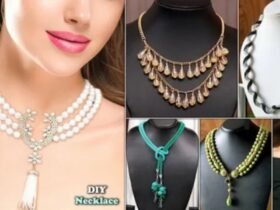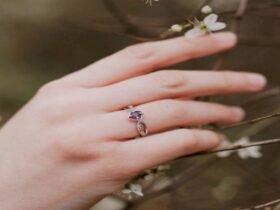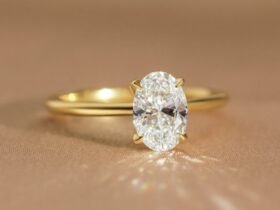Introduction
The snake bite piercing, with its two symmetrical piercings on the lower lip, is a popular choice for those seeking an edgy and eye-catching addition to their look. Named for its resemblance to snake fangs, this piercing can add a touch of rebellion or complement a variety of styles. But before you take the plunge, it’s important to understand what’s involved. This comprehensive guide will delve into everything you need to know about snake bite piercings, from their history and types to aftercare and potential risks.
History of Snake Bite Piercings
The exact origin of snake bite piercings is unclear, but they likely emerged within various body modification practices across different cultures. Similar lip piercings have been documented in ancient civilizations like the Aztecs and Mayans, often associated with rituals or social status.
In modern times, snake bite piercings gained mainstream popularity in the punk and alternative scenes of the 1970s and 1980s. They became associated with rebellion and self-expression, often sported by musicians, artists, and individuals challenging societal norms. Over time, snake bite piercings have transcended their subcultural roots and are now embraced by a wider audience seeking a unique aesthetic.
Types of Snake Bite Piercings
While the classic snake bite piercing features two piercings on the lower lip, variations exist to suit individual preferences:
- Classic Snake Bites: Two piercings placed symmetrically on either side of the lower lip, equidistant from the center.
- Low Snake Bites: Similar to classic placement, but positioned closer to the jawline for a subtler look.
- Spider Bites: Two piercings closer together towards the center of the lower lip, resembling spider bites.
- Vertical Snake Bites: Two piercings stacked vertically on one side of the lower lip.
- Horizontal Snake Bites: Two piercings placed horizontally across the lower lip, less common than vertical placements.
Jewelry Options for Snake Bites
The type of jewelry you choose for your snake bite piercings will depend on your personal style and comfort level. Here are the two main options:
- Labret Studs: These are flat-backed studs with a decorative top that rests on the inside of your lip. They are a popular choice for snake bites due to their comfort and versatility.
- Curved Barbells: These feature a curved barbell with decorative ends on both sides. While stylish, they can be more noticeable when speaking and eating, especially during the healing process.
Material is another crucial factor. Implant-grade surgical steel, titanium, and gold are generally considered the safest options due to their biocompatibility and lower risk of irritation.
Getting a Snake Bite Piercing: What to Expect
Finding a reputable piercer is essential for a safe and positive experience. Here’s a breakdown of the piercing process:
- Consultation: Discuss your desired placement, jewelry options, and any concerns you might have with the piercer. They will assess your anatomy to ensure suitability and answer your questions.
- Preparation: The piercer will clean and sterilize the area around your lip. They might mark the piercing sites with a pen to ensure symmetry.
- The Piercing: The piercer will use a hollow needle to create the piercings. You might feel a sharp pinch or prick during this process.
- Jewelry Insertion: The piercer will insert the chosen jewelry into the piercings and ensure proper fit.
The entire process typically takes just a few minutes. Aftercare instructions will be provided by the piercer, which are crucial for proper healing and minimizing risks.
Aftercare for Snake Bite Piercings
Proper aftercare is essential to prevent infection and ensure your snake bite piercings heal smoothly. Here are some key aftercare tips:
- Cleaning: Clean your piercings twice daily with a saline solution made for wound care. Soak the piercing for 3-5 minutes, then gently rinse with clean water. Avoid using harsh soaps or alcohol-based products.
- Oral Hygiene: Maintain excellent oral hygiene by brushing your teeth twice daily and flossing regularly. This helps remove bacteria and prevent infection in your mouth.
- Avoid Irritants: Avoid spicy, acidic, or hot foods and drinks during the healing process, as they can irritate the piercings.
- Don’t Touch!: Avoid touching or playing with your piercings, as this can introduce bacteria and delay healing.
- Downsize Jewelry: As the swelling subsides, you might need to have your piercer downsize your jewelry to ensure a proper fit.
Healing typically takes 6-8 weeks, but it can vary depending on your individual body. Be patient and consistent with your aftercare routine.
Risks and Complications
- Infection: This is the most common complication, often caused by improper aftercare or using unsterile equipment during the piercing process. Signs of infection include redness, swelling, pus discharge, and a fever. If you experience any of these symptoms, see a doctor immediately.
- Allergic Reaction: Some people might be allergic to the jewelry material, causing irritation, redness, or a rash around the piercing site. If you suspect an allergy, consult your doctor and consider switching to a hypoallergenic material like implant-grade titanium.
- Bleeding: Some minor bleeding is normal during the piercing procedure. However, excessive bleeding could indicate a clotting issue or improper technique. If you experience excessive bleeding, consult the piercer or a doctor.
- Scarring: Scarring can occur if the piercing gets infected or if you don’t follow proper aftercare. Keloids, a raised scar, are less common but can develop.
- Nerve Damage: There’s a small risk of damaging a nerve in the lip during the piercing, which could lead to numbness or tingling. This is why choosing a reputable piercer with experience is crucial.
- Dental Issues: Improper jewelry placement or playing with the piercings can damage your teeth or gums. Opt for a piercer who understands proper anatomy and choose jewelry with a smooth, comfortable back.
Remember, these risks can be significantly minimized by choosing a reputable piercer, following proper aftercare instructions, and listening to your body.
FAQs
How much does a snake bite piercing cost?
The cost of a snake bite piercing can vary depending on your location, the piercer’s experience, and the jewelry you choose. Generally, expect to pay between $50 and $100 per piercing, not including the jewelry.
Can I take my snake bite piercings out?
Yes, you can take your snake bite piercings out. However, it’s important to wait until they are fully healed, typically 6-8 weeks. Removing them before then can disrupt the healing process and increase the risk of complications. Once healed, the piercings might close up if you leave the jewelry out for an extended period.
Can I get snake bite piercings if I have braces?
It’s generally not recommended to get snake bite piercings with braces. The metal from the braces can irritate the piercings and make healing more difficult. Additionally, the piercings could interfere with adjustments or damage the braces themselves. Consult your dentist before making a decision.
Conclusion
Snake bite piercings can be a stylish and unique way to express yourself. By understanding the risks involved, choosing a reputable piercer, and following proper aftercare, you can significantly increase your chances of a positive experience. If you’re considering getting snake bite piercings, weigh the pros and cons carefully and make sure you’re prepared for the commitment involved. With proper care and maintenance, your snake bite piercings can become a cherished part of your self-expression.






















Leave a Reply